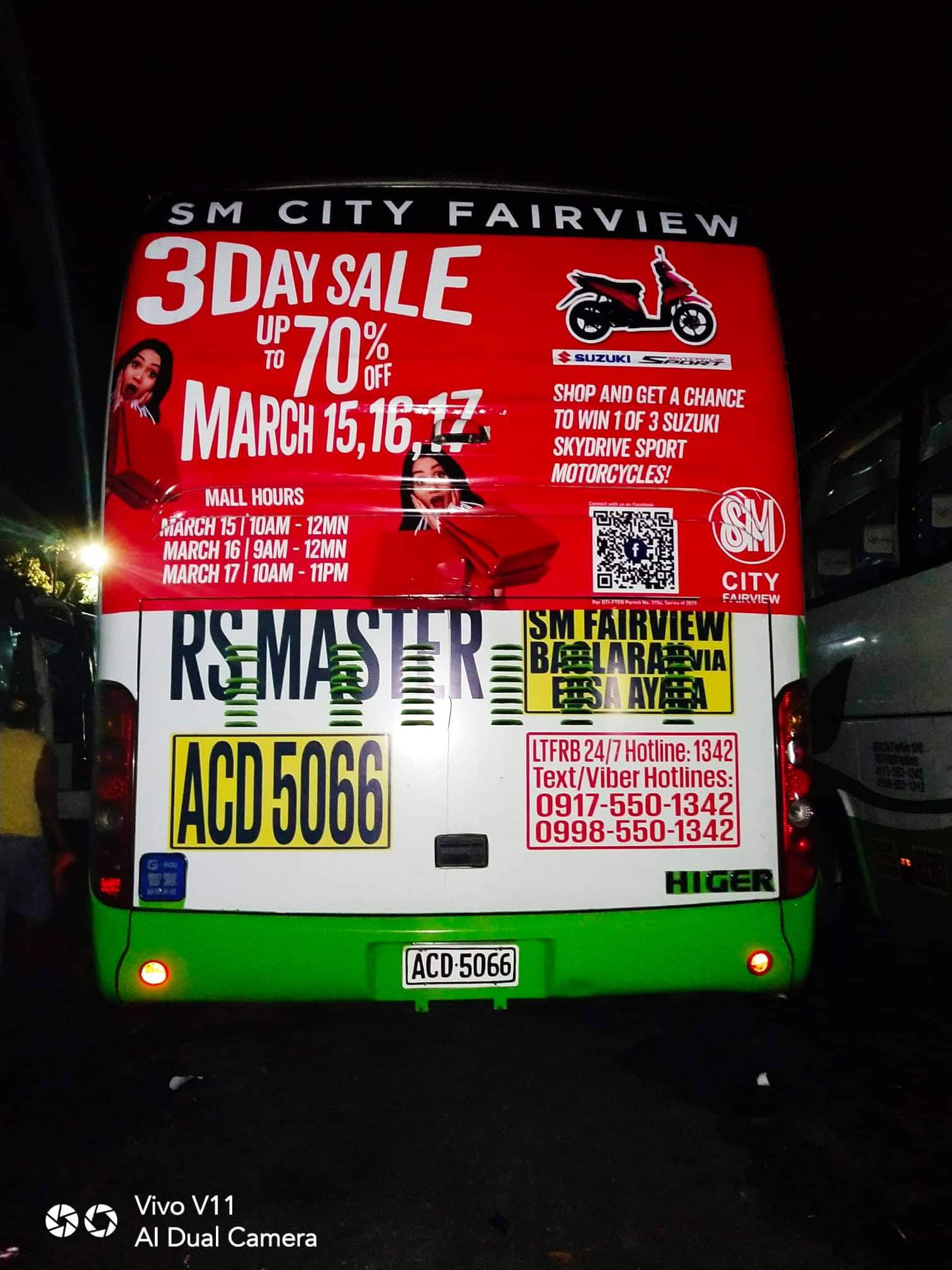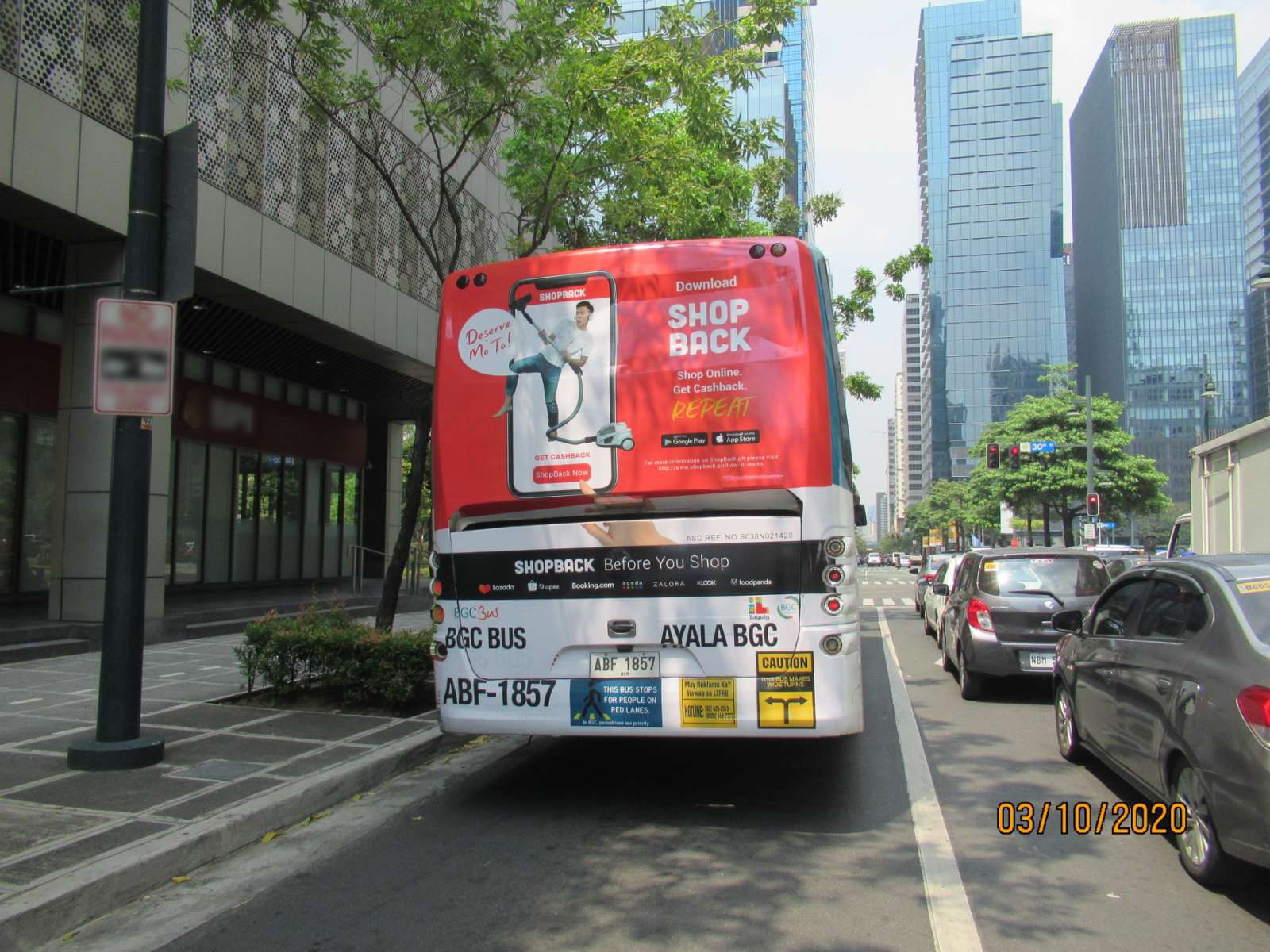Transit Advertising Philippines: An Innovative Way to Promote
Transit Advertising Philippines: An Innovative Way to Promote
Blog Article
Comprehending the Function of Transit Advertising And Marketing in Enhancing Brand Visibility and Customer Involvement
Transportation advertising and marketing has actually emerged as a pivotal aspect in the advertising and marketing landscape, providing distinct opportunities for brands to raise their visibility and engage consumers successfully. With the capacity to get to a restricted and diverse audience throughout their everyday commutes, these advertising techniques are not merely regarding presence; they are regarding producing purposeful links with prospective consumers. As we explore the multifaceted benefits and ingenious strategies within transit marketing, it becomes necessary to think about just how these aspects jointly influence consumer perception and habits, questioning regarding their long-lasting influence on brand loyalty.
Interpretation of Transportation Marketing
Transportation advertising describes the practice of advertising products, solutions, or brands through promotions put in and around mass transit systems. This kind of advertising and marketing includes a variety of positionings, consisting of posters on trains and buses, electronic displays at transit terminals, and wraps on the outside of lorries. It intends to reach a varied target market, exploiting on the high foot traffic related to public transportation.
Transportation advertising is purposefully placed to catch the attention of commuters, that often spend considerable time waiting or taking a trip. By integrating ads right into the day-to-day routines of people, brand names can create a long lasting impact and foster brand recognition. The tool is especially efficient in city atmospheres, where mass transit is a primary setting of traveling.
In addition, transit advertising and marketing can facilitate local targeting, enabling businesses to reach specific demographics based on transportation routes and station areas. As city populaces grow and using public transport rises, this marketing approach has gained prestige as an important element of incorporated advertising and marketing strategies. The vibrant nature of transit advertising, incorporated with its capability to engage customers in a restricted setting, highlights its value in modern marketing techniques.
Advantages of Transportation Advertising
The effectiveness of transportation advertising and marketing exists in its capability to deliver a multitude of advantages to brand names looking for to boost presence and interaction. One of the primary benefits is the extensive reach it offers; transportation ads can properly target varied demographics throughout metropolitan areas, reaching both pedestrians and travelers alike. This broad direct exposure considerably improves brand name awareness.
Another advantage is the high frequency of perceptions. As transportation cars travel along recognized courses and stop at numerous places, they develop repeated exposure that enhances brand messages. This frequency fosters knowledge, which is critical in consumer decision-making.
Transportation advertising is likewise affordable compared to various other media platforms. Given its extensive reach and potential for high impacts, brand names often experience a reduced cost per thousand impressions (CPM), optimizing their advertising and marketing spending plan.
In addition, transit advertisements can produce a feeling of community connection. By straightening with regional transportation systems, brand names can resonate with local target markets and cultivate a sense of regional satisfaction. This local method enhances brand name loyalty and involvement, making transit marketing a compelling option for organizations intending to strengthen their visibility in the marketplace.

Effective Methods for Transit Projects
To optimize the influence of transportation projects, brands ought to take advantage of calculated planning and execution tailored to their target market. First, determining the market attributes of the target market utilizing public transit is essential. This permits brands to create customized messaging that resonates with possible clients.
Next, choosing the ideal transportation tools is essential. Whether utilizing bus covers, train posters, or digital screens, each tool has unique advantages that can enhance exposure. As an example, vibrant visuals on bus covers can stand out, while electronic ads can be upgraded regularly to mirror prompt promos.
Moreover, integrating a natural branding strategy across transit platforms guarantees consistency and reinforces the brand name's identity. Using unforgettable taglines and eye-catching designs will certainly reinforce brand recall amongst commuters.
By utilizing these methods, brand names can effectively harness the potential of transportation marketing, cultivating greater understanding and link with their target audience. Eventually, a well-executed transportation campaign can drive significant growth in brand name visibility and customer engagement.

Measuring Effect and Engagement
In evaluating the effectiveness of transportation ad campaign, precise measurement of impact and engagement is vital for brand names seeking to maximize their marketing approaches. Metrics such as reach, regularity, and perceptions offer foundational data to analyze visibility. Analyzing these aspects assists identify the number of prospective clients are subjected to the promotions during their everyday commutes.
Interaction can be further evaluated via customer interactions, such as web site traffic, social media sites points out, and straight actions to calls-to-action included in the ads. Using tools like QR codes or unique URLs can facilitate monitoring of consumer behavior directly connected to transportation projects. Surveys and comments mechanisms additionally function as beneficial techniques to gather qualitative information on consumer perceptions and recall of the advertisement.
In addition, progressed analytics and attribution models can correlate transit exposure with subsequent investing in actions, using understandings into the return on investment. By employing an extensive strategy that integrates measurable and qualitative actions, brand names can establish a nuanced understanding of their transportation advertising effect. Ultimately, this data-driven approach enables brand names to fine-tune their campaigns, guaranteeing they resonate effectively with target audiences and improve total brand exposure.
Study of Effective Campaigns
Successful transit ad campaign offer as engaging examples of how reliable strategies can raise brand visibility and engagement. address Transit Advertising Philippines. One remarkable instance is the "I Love New York" project, which changed the city's photo and drew in numerous visitors. By using metro check that advertisements, signboards, and bus covers, the project developed a solid, natural brand identification, resulting in a substantial uptick in tourist and local service patronage
Another excellent project is Coca-Cola's "Share a Coke" effort, which leveraged transportation advertising and marketing to customize the brand experience. By including popular names on marketing materials across various transportation platforms, Coca-Cola fostered a much deeper psychological connection with consumers, encouraging them to share their experiences on social networks.
Additionally, the "Got Milk?" project effectively made use of public transport ads to reach a broad target market, enhancing the message of the relevance of milk in a balanced diet regimen. The campaign saw a quantifiable boost in milk consumption in target demographics.
These case studies highlight that when carried out attentively, transit advertising and marketing can substantially improve brand name visibility, foster consumer engagement, and drive quantifiable results, demonstrating its crucial duty in contemporary advertising and marketing techniques. - Transit Advertising Philippines
Conclusion
In final thought, transit marketing works as an essential tool for improving brand name presence and fostering consumer engagement. By utilizing tactically positioned advertisements within public transportation systems, brand names can properly strengthen and reach varied audiences recognition with consistent exposure. The implementation of targeted messaging and ingenious approaches additionally amplifies the influence of transit projects. Ultimately, the capability to determine involvement and analyze effective situation researches emphasizes the performance of transportation advertising and marketing in driving brand name loyalty find out here now and consumer communications.
Transit advertising has arised as a critical element in the advertising and marketing landscape, providing unique chances for brands to elevate their visibility and involve customers efficiently.In addition, transit advertising can help with localized targeting, allowing businesses to get to specific demographics based on transit paths and terminal places.In examining the performance of transit advertising and marketing projects, exact dimension of impact and engagement is essential for brand names seeking to optimize their advertising methods.Effective transit advertising and marketing campaigns offer as engaging instances of exactly how reliable methods can raise brand name exposure and involvement.In verdict, transportation advertising serves as an essential device for improving brand presence and fostering consumer involvement.
Report this page